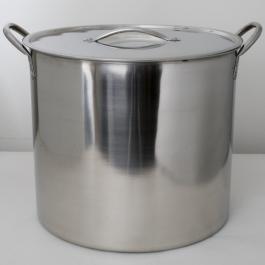On Tap (Mar 8th 2010)
Apologies for the lite post week, it was a busy busy week at work with some long days and late nights. I was also working on a long post for Inly School where I am a sometime middle school guest speaker on a class I taught recently. I will post the link when its up. It has been a lite brewing week to as all the fermenters are full with fermenting and conditioning ale with none ready to be transferred. This is the problem when brewing heavier ales like Olds and Imperials, they take longer to condition. Take a look at my cellar inventory below and everything is in a 3-4 weeek rest (or more).
So we will have to wait a week for the Speckled Hen clone to get started. My kids are off school this week and next and the wife and kids will be off west to LA to visit Grandpa, so poor old me is left alone with my brewing, I just wish I had timed this event better. I could have used the time to brew every night! I will miss them all very much, its a big empty house without the sound of two little boys running around, laughing, joking.. I digress, its time for the On Tap update
Primary
- Nothing new I am afraid, Old Speckled Hen clone is on deck
- 115th Dream Imperial IPA ( 1 wk 1 day (p) ) – A rather extreme IPA, high in ABV and a whopping 120 IBUs with over a 1 lb of hops using a technique called Hop Bursting I covered in a post last week.
Secondary
- Olde Luddite English Strong Ale (1 wk(p) 1 wk 1 day (s) ) – A new Old Ale kit from Northern Brewer, thought I would add some Old Ale kits to my current Old’s and Browns series. The FG came in at a whopping 1017, almost 6% over its max attenuation, the Fullers yeast was very active. The sample was already very clear and I could have drunk the whole thing. This is going to be a very smooth, Old Ale. Second week of its 3 week rest.
- Theakston Old Peculier Clone (1 wk(p) 2 wks, 2 days (s) ) – My first pass at this classic old ale, FG came out in range along with the colour, that is all we can ask. It would appear the Trappist yeast is still working as a thin layer of yeast cake has formed on top of the conditioning ale. I am intrigued to find out what if anything has happened to the FG. Now for 1 more week in the secondary
Bottle/Keg Conditioning
- Twelfth Night Stout (2 wk (p), 2 wks (s), 1 wk 2 days (k) ) – A new extract clone recipe of Rogues Shakespeare Stout from Northern Brewer featuring the PacMan Ale yeast strain from Rogue. This one is an ass-kicking 70 IBU stout sitting in the keg and in its second week of rest. I will probably give this at least 4 weeks before tapping
- Fullers London Pride clone (1 wk (p), 1 wk (s), 3 wk, 3 days (b) ) – came out crystal clear from the primary with the FG exactly on target. Looking forward to seeing how this brew finishes off. In its final week of conditioning so look for a review on this next week, I am quietly confident.
- Lord Fatbottom Ale (1 mth (p), 3 mths 1 wk (s)) –beginning the second half of its 6 months rest.
Drinking
- Spitfire Premium Ale clone (1 wk (p), 2wks (s), 4 wks, 3 days (b)) – my 2nd pass at Spitfire Ale, the Shepherd Neame classic from Kent UK. Completely cleared but with a lot of sediment in the bottle. Took 2 weeks to finish off the first case, a little too quick given this ale is pretty strong. It just goes down like a session brew 🙂
- Grateful Dead Guy Ale (1wk (p), 2wks (s), 4 wks 3 days (b)) – a new special edition kit from Northern Brewer featuring the newly released PacMan Ale yeast strain from Wyeast/Rogue Breweries, this one is a Rogue Dead Guy Ale clone. I did a side by side taste test with an actual Rogue Dead Guy Ale, colour and flavour are so close its hard to tell which one was which. Good job NB.
- Flowers Original Ale clone (1 wk (p), 1 wk (s), 6 wks (b)) – my first brew of 2010 and first attempt at the classic Flowers recipe. See review from earlier, its a winner and has been promoted to the recipe page. Only one bottle left, this will be finished this week. Only made 3/4 of a case and look forward to brewing a full 5 gallons later in the year. This ale appears to peak in flavour after ~5 weeks in the bottle
- Dogfish Head 90 min IPA clone (1 wk (p), 3 wks (s), 3 mnth 3 wks (b) ) – Continues to mature with age, been holding back on these to see how they pan out.


